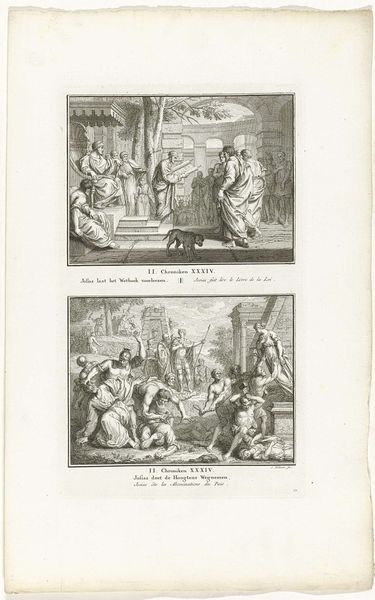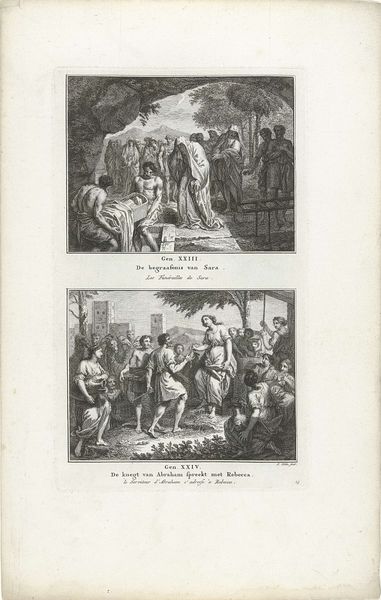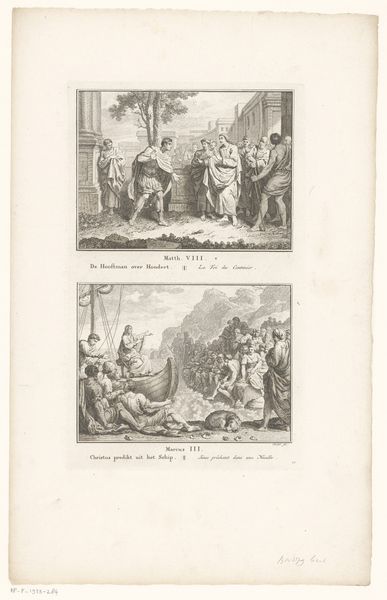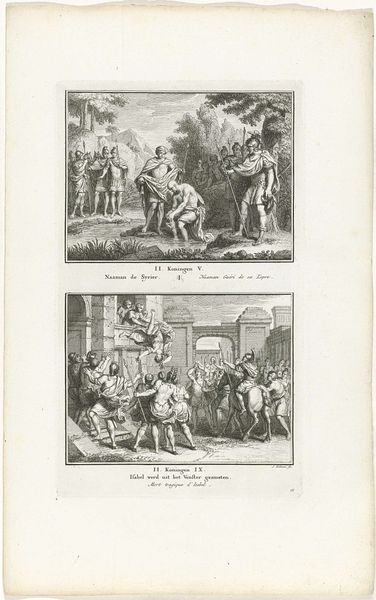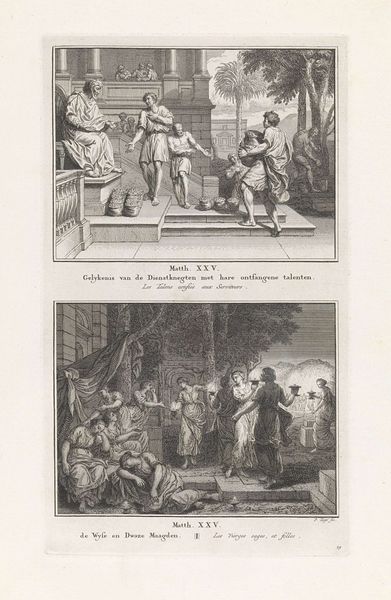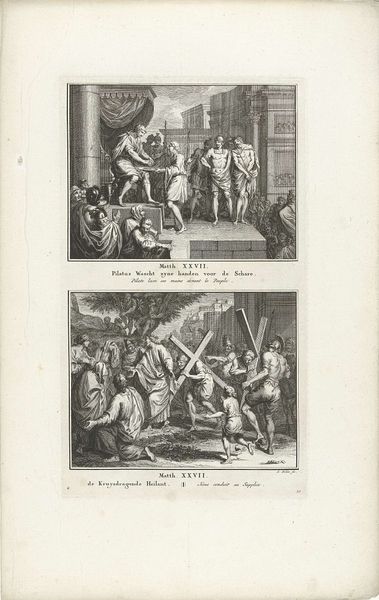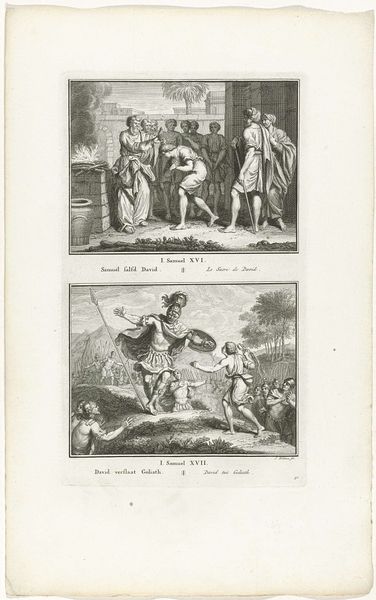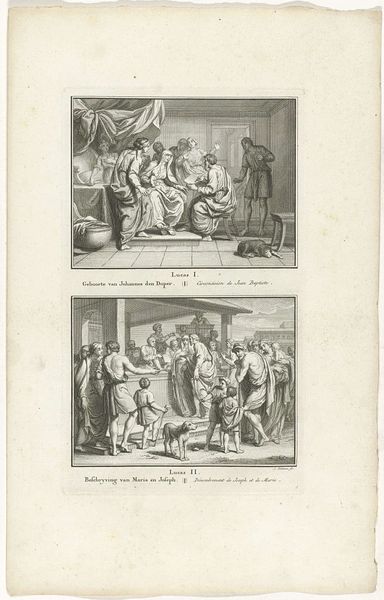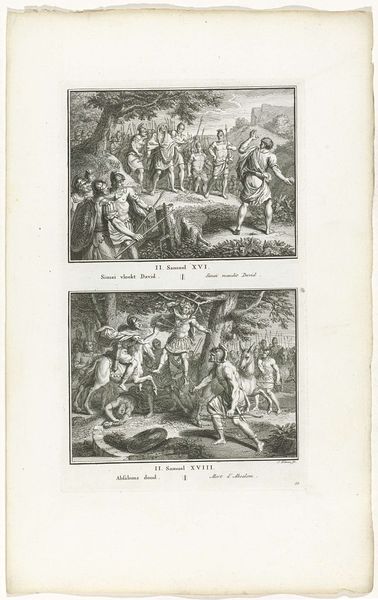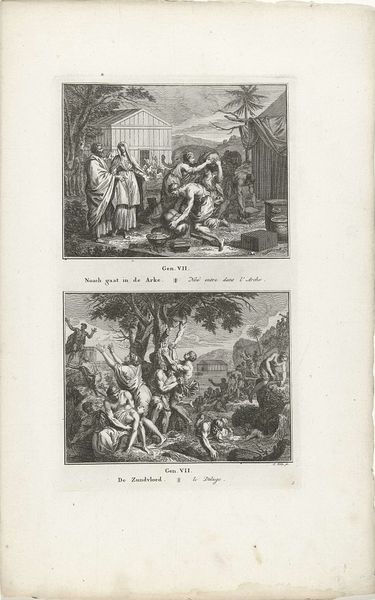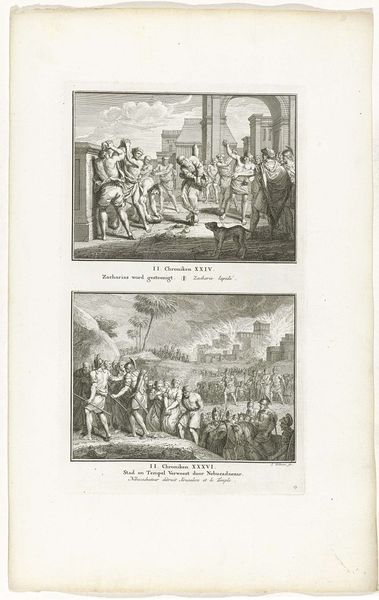
Dina uit Sichem gehaald en Jakob zuivert zijn huis van vreemde goden en versieringen 1791
0:00
0:00
simonfokke
Rijksmuseum
Dimensions: height 324 mm, width 193 mm
Copyright: Rijks Museum: Open Domain
Curator: This print by Simon Fokke, dating from 1791, offers a fascinating double scene depicting stories from the Book of Genesis. Look closely; the upper register portrays Dina being retrieved from Shechem, and the lower one shows Jacob cleansing his house of foreign idols. Editor: My immediate impression is the stark contrast in mood. The top scene feels violent and urgent, underscored by those fallen figures in the background, while the lower one is more deliberate and ritualistic, focusing on purification. It’s a study in the artist’s command over portraying different emotional landscapes. Curator: Precisely. It’s intriguing how Fokke utilizes the medium of printmaking – specifically etching and engraving – to convey these complex narratives. The lines are so precise, almost clinical, yet they evoke a strong sense of drama. I am fascinated by what a closer look reveals about printing processes in the Netherlands at that time, its role within households as visual depictions of moral teachings. Editor: And what about the socio-political context? This image appeared during the late 18th century; how did the rising tide of Enlightenment ideals shape interpretations of biblical stories? Was it merely didactic, or was it also a way to reaffirm tradition and community values amid a changing world? Curator: The dual scene presents an interesting lens into contemporary debates about cultural assimilation and religious purity. The top scene evokes a strong sentiment toward family honor and community, even down to using garments of different colors to easily distinguish protagonists. In the lower scene, we see a clear visual statement in rejecting what is considered 'foreign,' echoing calls for Dutch cultural purity as a symbolic statement using the available materials. Editor: It speaks to the complex relationship between art, power, and belief. Whose stories get told and how are central concerns, and prints like this provide a tangible link to that historical dialogue. The intended public for this piece were the people purchasing it, so, how did the act of dissemination itself shape its meaning and legacy? Curator: It's clear that examining the production and consumption of images like these are just as revealing as dissecting their narratives and meanings. The materials and how it was made show just as much history and culture as does what is being presented, and each adds complexity to a fascinating conversation around cultural norms and shifting power structures. Editor: Absolutely. It allows for new questions and insights and offers a glimpse into art's continuous relevance in a very noisy and contentious world.
Comments
No comments
Be the first to comment and join the conversation on the ultimate creative platform.

